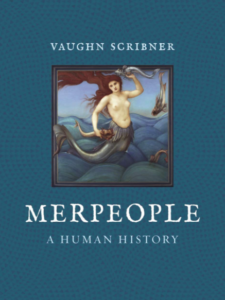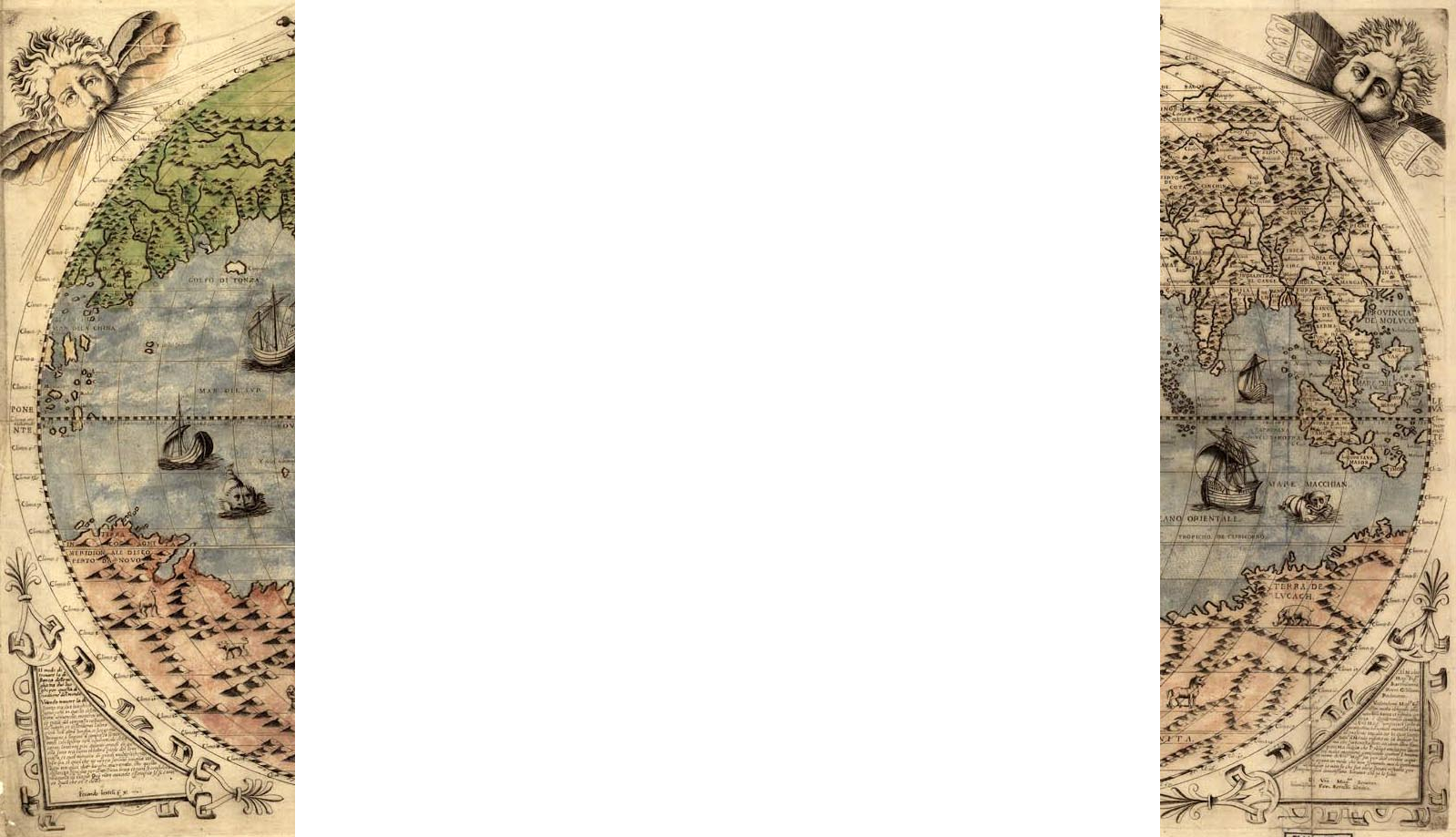Scribner, Vaughn. Merpeople: A Human History. Reaktion Books, 2020. ISBN: 9781789143140, 320 pages, $27.50 USD.
By Dr. Katy Kole de Peralta
 When we engage our sense of wonder, we draw freely on history’s muse. Vaughn Scribner shares the depth of such a plunge in his latest work. It offers chronological and geographical breadth, from 1000 BCE to the present, and engages many iterations of mer-like creatures including ancient water deities, sirens, tritons, mermaids, and manatees. From this vantage point, Scribner shows mermaids reveal more about humans than they do about the natural world. Along this journey, the book traces several key themes including religion, science, capitalism, wonder, and gender.
When we engage our sense of wonder, we draw freely on history’s muse. Vaughn Scribner shares the depth of such a plunge in his latest work. It offers chronological and geographical breadth, from 1000 BCE to the present, and engages many iterations of mer-like creatures including ancient water deities, sirens, tritons, mermaids, and manatees. From this vantage point, Scribner shows mermaids reveal more about humans than they do about the natural world. Along this journey, the book traces several key themes including religion, science, capitalism, wonder, and gender.
Mermaids are hybrid creatures, the fusion of humans and fish. Their hybrid relative, Homer’s half-bird, half-human sirens, were associated with infinite knowledge. But, in the medieval period, the Catholic Church appropriated the mermaid and transformed its significance, relying more heavily on mermaids over tritons to convey ideas about morality, gender, and power. Adorning medieval churches, the mermaid played a duplicitous role. On the one hand, she was a naïve maiden waiting to be rescued, and on the other, she was a conniving, malicious character. Visually, she displayed long flowing hair, a comb, and a mirror, to remind viewers of her vanity and vice.
More importantly, the prevalence of these creatures meant that “Western Europeans fully integrated merpeople into their cultural, religious, artistic, and imperialistic mindset during the Renaissance (1450-1500),” (p. 59). As people traversed the globe, exploring sea routes and unfamiliar terrains, they fully expected to and did find merpeople. Images, sightings, and reports increased, and they featured prominently in maps and official accounts. In the nineteenth century, newspapers provided the primary medium via which people shared, discussed, and scrutinized such tales.
The convergence of the enlightenment, science, and mythological creatures illuminates how well respected, elite, educated men translated mythology into a taxonomy. As part of the natural world, scientists and philosophers theorized, debated, and placed mermaids within the realm of possibilities. Coinciding with the rise of public history, cabinets of curiosity and public exhibits displayed mermaid specimens, if albeit only in pieces. This drove market demand for forgeries, leading to what Scribner defines as three crucial stages in the nineteenth century. First from 1800-1822 popular “Enlightenment notions of science and wonder,” drove the public and scientists alike to organize mythological creatures systematically and rationally (p. 126). In phase two, from 1822-1845, Western audiences reached the pinnacle of mermaid credence, and mermaid sightings were published in newspapers. Scientists verified such stories as authentic, and debunked Japanese forgeries (p. 126). In phase three from 1845-1900, public audiences approached the topic more skeptically, armed with scientific reasoning. Nevertheless, interest in freak shows and fantastical oddities continued (p. 127).
From this dive into scientific and intellectual history, the book transitions into an eclectic section on modern cultural consumption. It maintains the throughline on capitalism and the manipulation of mermaid lore. Examples include films, advertising, kitschy tourist traps, and toys. To the author’s point that merpeople reflect the humans who create them, the Starbucks mascot offers a stark and unforgettable example of how companies deploy gender and sexuality for profit. Scribner writes, she “…is perhaps the most sexualized of any siren used for capitalistic purposes in the twentieth century, for she is a direct copy of those alluring mermaids- spread tails, flowing hair, and bare breasts, that originally decorated medieval churches,” (p. 203).
The epilogue, “Global Waters,” is the most chronologically and geographically diverse section. It traces water deities back to the ancient Sumerians. Whether a deity or hybrid fish-human, many societies have some version of this creature. Scribner discusses transcultural adaptations including Vishnu in India, Oba of Benin, the African Diaspora’s Sirena and Mami Wata, the Japanese ningyo, and others. Readers will enjoy the book and its accessibility. It is beautifully illustrated, which fosters a heavy focus on visual culture. The source material also leans toward newspapers, magazines, films, and consumer products. The crux of the manuscript and its core arguments rest on English-language sources and the accounts of educated, elite, and white American and English men. While this allows for a fascinating discussion of credibility, class, and race in nineteenth-century England and North America, at times Scribner asserts claims that should be more tightly constrained by those sources.
What place do merpeople have in a history course? Mythological history encompasses people and societies with very different worldviews. Their perspectives at times seem strange or even surprisingly familiar. The study of merpeople asks students to understand diversity and appreciate it within its cultural context, a skill that no doubt benefits classrooms today.
Katy Kole de Peralta is a clinical assistant professor of history at Arizona State University and a project lead on the COVID-19 Archive. Her research integrates the environment and medicine in early-modern Iberia and Peru to 1) capture the intrinsic relationship between environment and health; 2) demonstrate the evolution of health as a fluid, changing concept depending on its cultural context; and 3) use the digital humanities and open-access platforms to share history with English- and Spanish-speaking audiences. Her Twitter handle is @gaia_and_clio.







